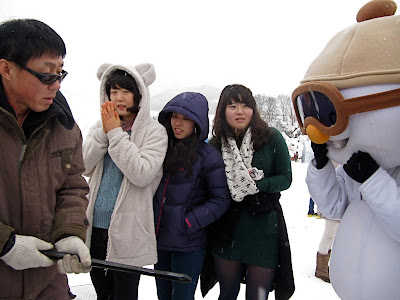I have to say, I've been to a lot of cities in the world, but I don't know if I ever had such love at first sight as I did in Istanbul. Even on the days where I didn't have much to do because of bad weather, I was just content to be in the city. There was just something magical about it. Delicious food, ancient history, fun night life, cheap prices, kind, friendly people... I couldn't find anything wrong with the place actually, except for the fact that it rained 3 out of the 4 days I was there. Here are just a few of the amazing sights of the city besides the most famous
Aya Sofia and Blue Mosque.
Basilica Cistern
The Basilica Cistern. This was where water was stored during Roman times. Now when you enter, they just keep a little water in the bottom so you get the idea, but originally, this would have been filled with water. It's beautiful down there, though, and there are two Medusa heads which draw the most attention from the crowds besides the cheesy tourist stuff that has been put in to bring in a few more bucks.
One of two Medusa heads in the Basilica Cistern
The Bosphorus Ferry. Istanbul is divided into two sides, the Asian/Anatolian side and the European side. The two sides are split by the Bosphorus Strait which is considered the boundary between Europe and Asia. There are several bridges that cross, but to get to most places, it's generally easier to take a ferry. It's cheap and ferries run often and take between 10-20 minutes to cross. It's fun to take the ferry because you can see Istanbul from a different view, plus enjoy a hot
cay (pronounced chai, it's tea) while you enjoy the scenery.
Turkish flag off the side of the boat with a view of the European side in the background
Sunset over the European side of the Bosphorus from the ferry
 Ferry at night with bridge in background
Ferry at night with bridge in background
Hand weaving a carpet in a shop window
Carpet Shops. Though I didn't dare enter any carpet shops because I knew they were way out of my price range, there are carpet vendors aplenty in Istanbul. I'm no expert, but if you know your stuff, this would probably be the place to buy carpets. Unfortunately, I personally would never be able to tell the difference between the handwoven carpets or the factory made carpets so I didn't really bother.
The Spice Bazaar. This market, turned tourist destination is quite famous, but I personally couldn't stay in here for more than a few minutes. Every stall has hawkers outside trying to talk to you and bring you into their shop. But, if you want to buy some spices or Turkish delight, this isn't a bad place to check out.
Taksim. Not so far from all the ancient wonders like the Grand Bazaar and the Aya Sofia lies Taksim, Istanbul's hip shopping, restaurant and nightlife district. From tourist shops to name brands and everything in between, you can find it here in Taksim. Lots of upscale restaurants and local cheap spots can be found if you take some side turns off into the allyways off the main street. There are several streets just lined with clubs and bars, both places I went to had live music which was really cool.

Traditional Sweets. I didn't really know what Turkish delight was before I got here but the best way to find out for me was to go in to some of the shops in Taksim and try some free samples. I personally decided that it wasn't really my favorite and the high prices in the shops in Taksim made me choke a little. If you are a fan of the stuff, I recommend buying it outside of the touristic areas, the prices get a little more reasonable there. Oh, and be sure to buy it fresh, not pre-packaged! What I did fall in love with was baklava. Again, I couldn't afford it in the tourist areas, but as I got out of Istanbul the prices got lower and lower until I reached Trabzon where I found a little bakery that sold it for 6 Lira/ Kilo (Less than 4.00 USD) which was ridiculously cheap especially compared to the 25 Lira/ Kilo they were charging in Istanbul in the tourist areas.

Gelata Tower. This tower, built in 1348 was once the tallest structure in the city. Though it of course can no longer claim that title it is still a beautiful landmark not far from Taksim. Apparently if you go up there is a restaurant and cafe that holds performances, though I didn't check it out.
Istanbul was one of my all time favorite travel destinations of all time and I could easily see myself living there. There are English jobs a plenty there, though they don't pay nearly as well as Korea, Japan or Taiwan. Living expenses, though, seem quite reasonable and it seems like a pretty nice place to live. Guess I have to add another thing to my bucket list.
























































